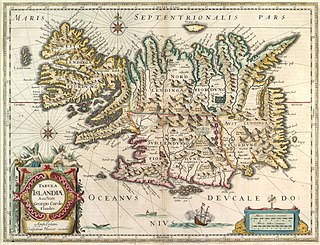
Parliamentary elections were held in Iceland on 20 April 1991. The Independence Party remained the largest party in the Lower House of the Althing, winning 17 of the 42 seats.

Early parliamentary elections were held in Iceland on 25 and 26 October 1959. Following the electoral reforms made after the June elections, the Independence Party won 16 of the 40 seats in the Lower House of the Althing.

Parliamentary elections were held in Iceland on 25 April 1987. The Independence Party remained the largest party in the Lower House of the Althing, winning 12 of the 42 seats.

A referendum was held in Iceland between 20 and 23 May 1944. Voters were asked whether the Union with Denmark should be abolished and whether to adopt a new republican constitution. Both measures were approved with more than 98% in favour. Voter turnout was 98.4%, and 100% in two constituencies, Seyðisfirði and Vestur-Skaftafjellssýsla.

The Icelandic Independence movement was the collective effort made by Icelanders to achieve self-determination and independence from the Kingdom of Denmark throughout the 19th and early 20th century.
Parliamentary elections were held in Iceland on 21 October 1916. Voters elected all 26 seats in the Lower House of the Althing and eight of the fourteen seats in Upper House, the other six having been elected in August. The Home Rule Party emerged as the largest party in the Lower House of the Althing, winning eight of the 26 seats.

Parliamentary elections were held in Iceland on 5 August 1916, the first elections held after women's suffrage was introduced. Following reforms to the Althing the previous year, the six seats in the Upper House appointed by the monarch were abolished, and replaced with six elected seats. The seats were elected by proportional representation at the national level, using the D'Hondt method. The remaining eight seats were elected along with the Lower House in October.

Elections to the Upper House of the Althing were held in Iceland on 8 July 1922. Following reforms in 1915, the six seats in the Upper House appointed by the monarch were abolished, and replaced with six elected seats. The seats were elected by proportional representation at the national level, using the D'Hondt method. The remaining eight seats were elected along with the Lower House.

Elections to the Upper House of the Althing were held in Iceland on 1 July 1926. Six seats were elected by proportional representation at the national level, using the D'Hondt method. The remaining eight seats were elected along with the Lower House.

Elections to the Upper House of the Althing were held in Iceland on 15 June 1930. Following reforms in 1915, the six seats in the Upper House appointed by the monarch were abolished, and replaced with six elected seats. The seats were elected by proportional representation at the national level, using the D'Hondt method. The remaining eight seats were elected along with the Lower House. This was the last election solely for the Upper House, as from 1934 onwards all Upper House members were elected together with the Lower House.

Parliamentary elections were held in Iceland on 27 October 1923. Voters elected all 28 seats in the Lower House of the Althing and eight of the fourteen seats in Upper House. The Citizens' Party, a loose collection of conservatives, emerged as the largest party in the Lower House, winning 16 of the 28 seats.

Parliamentary elections were held in Iceland on 9 July 1927. Voters elected all 28 seats in the Lower House of the Althing and eight of the fourteen seats in Upper House. The Progressive Party emerged as the largest party in the Lower House, winning 13 of the 28 seats.

Parliamentary elections were held in Iceland on 12 June 1931. Voters elected all 28 seats in the Lower House of the Althing and eight of the fourteen seats in Upper House. The Progressive Party emerged as the largest party in the Lower House.

Parliamentary elections were held in Iceland on 16 July 1933. Voters elected all 28 seats in the Lower House of the Althing and eight of the fourteen seats in Upper House. The Independence Party emerged as the largest party in the Lower House, winning 13 of the 28 seats.

Parliamentary elections were held in Iceland on 24 June 1934. They were the first held after reforms to the electoral system that increased the number of seats in the Lower House from 28 to 33 and ensured that all members of the Althing were elected at the same election. The Independence Party emerged as the largest party in the Lower House, winning 14 of the 33 seats.

Parliamentary elections were held in Iceland on 5 July 1942. Although the Independence Party won a plurality of votes, the Progressive Party remained as the largest party in the Lower House of the Althing, winning 14 of the 33 seats.

Early parliamentary elections were held in Iceland on 18 and 19 October 1942. They were held after reforms were made to the electoral system following the July elections. The Independence Party emerged as the largest party in the Lower House of the Althing, winning 13 of the 35 seats.

Parliamentary elections were held in Iceland in 1844. They were the first elections in the country's history.







